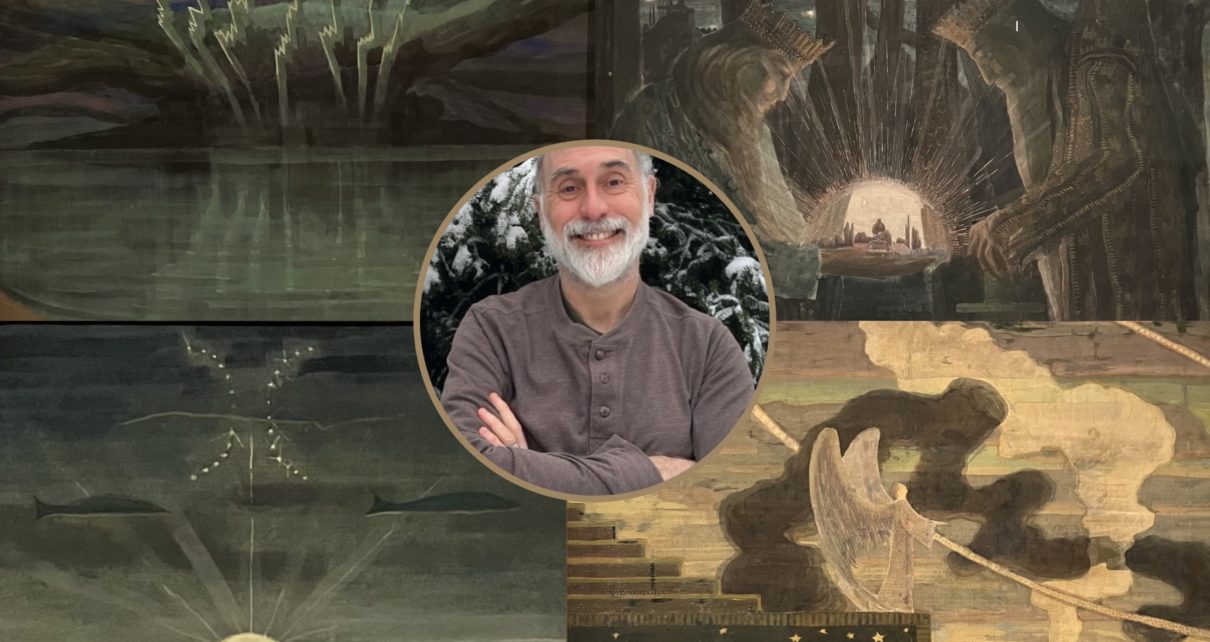Professor John McCannon, the coordinator of the History program, took a research trip to Lithuania for research into the life and art of the Lithuanian painter and composer Mikalojus Ciurlionis (1875-1911) from October 18 to October 23. This research trip is part of a much larger and earlier research trip on Russian painter and explorer Nicholas Roerich (1874-1947).
“I traveled to Moscow, Saint Petersburg, and other places in Russia, India (where Roerich lived for the last couple decades of his life), and European cities including Paris and Prague,” said McCannon.
This smaller trip was to look at the relationship between the two Russian artists. The two knew each other before Ciurlionis’ death, as they were both drawn to mystical and occultist forms of spirituality, and both were heavily influenced in their Symbolist painting styles by those alternative belief systems.
Nicholas Roerich’s art is influenced by Russian Symbolism, an intellectual and artistic movement predominant at the end of the 19th and beginning of the 20th century and added spiritual ties. To this, he added his own spiritual convictions. Roerich was interested in Theosophy — the originator of most modern New Age movements — and other forms of “spiritual” practices. It’s said that his paintings have a hypnotic expression.
Mikalojus Ciurlionis contributed to the popularity of Symbolist painting in late Tsarist Russia, producing works such as his “Zodiac” series. Ciurlionis thought that he had synesthesia, which is a pheromone disorder that causes people to cross their senses and essentially, feel or hear colors.
Despite his short lifespan, Ciurlionis remains Lithuania’s most famous painter, as well as its most famous composer. McCannon visited The National Museum of Lithuania in Kaunas, the second-biggest city in Lithuania, to visit these paintings. Some of his favorites were “The Zodiac Series,” “Sonata of the Star,” “Friendship,” “Lightning,” and “Sonata of the Pyramids.”
“I’m not into astrology or occult mysticism myself, but it’s interesting to see how artists will sometimes use that as inspiration and the Zodiac paintings are very haunting and symbolic,” said McCannon.
McCannon is a Russian studies specialist which involves being interested in places and cultures that used to be a part of the Soviet Union and the Russian empire, even if they are not a part of Russia anymore.
“I found it very worthwhile to be able to see the paintings in person. Especially coming from a scholarly and art history sense, it’s always much more enlightening to be able to see them in person, as opposed to seeing them online or in a book. Because it’s just the way of things that the actual physical artifact never photographs 100 percent correctly. So, seeing the work in person was quite special,” said McCannon.
The making of his book involved over 20 research trips over a number of years to complete this project last year.
John McCannon published a book about Nicholas Roerich called Nicholas Roerich: The Artist Who Would Be King. To find out more information about this book, visit https://upittpress.org/books/9780822947417/.




